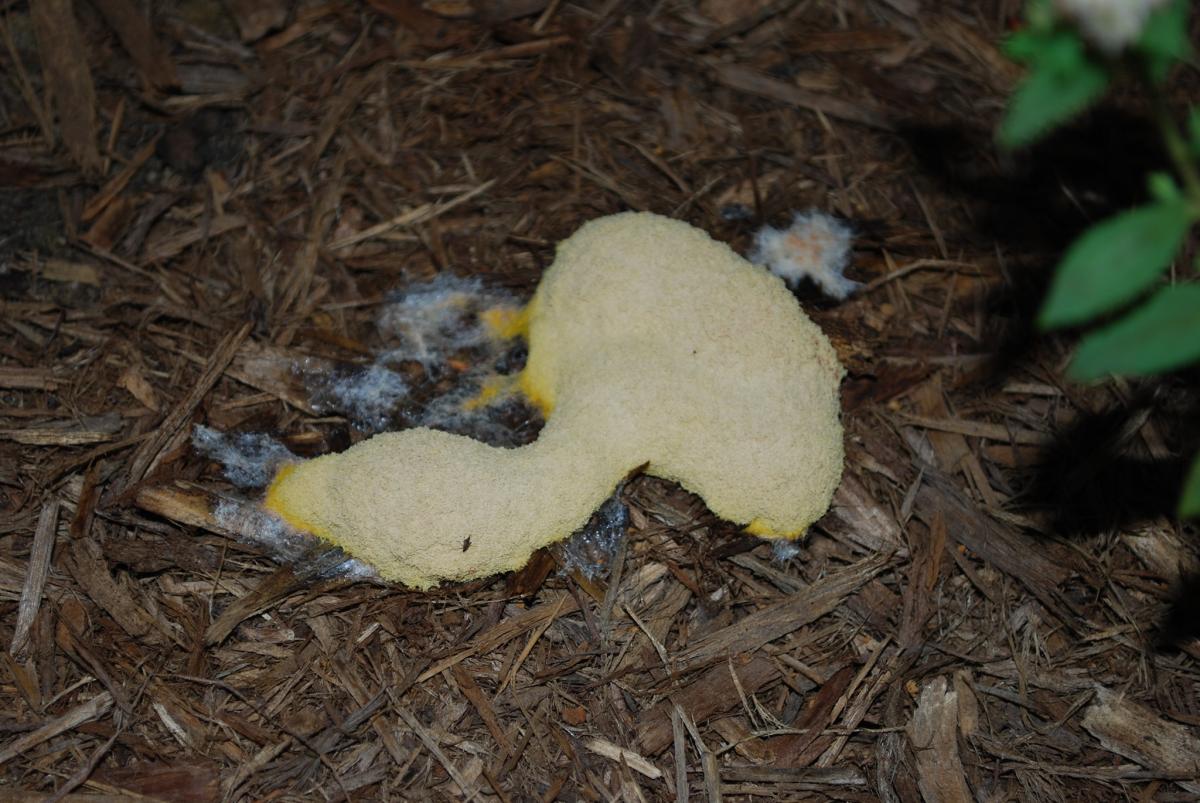Don’t Judge a Book by its Cover
Surely you’ve seen it.
Maybe you didn’t know what it was and dismissed it as something vile, repulsive, and unappealing lying provocatively in a mulch bed.
I’m talking about dog vomit fungus.
It’s a bit of a misnomer; dog vomit fungus is not a true fungus. It’s actually a slime mold, which are quite wonderful organisms!
My love for fungi stems from the time I spent with my grandma hunting morels every spring in our timber (Iowa-speak for unmanaged, deciduous forest), but my appreciation for fungal beauty comes from slime molds. And the most recognizable slime mold is (you guessed it) dog vomit fungus, aka Fuligo septica.
But again, the name is a misnomer. Slime molds aren’t true fungi; they’re not even in the same biological kingdom as fungi. They used to be, but research determined that they are more closely related to amoebas and certain seaweeds (than fungi). So now slime molds are classified in the Protista Kingdom, which is made up of a hodgepodge of simple organisms that don’t really belong anywhere else.
Regardless of their classification, there are many hundreds of different types of slime molds all throughout the world. Some are macroscopic and can be easily be seen, such dog vomit fungus, but most are micropscopic. Not all slime molds look like dog vomit; some are outwardly quite pretty, especially ones found on decaying wood or even grass blades. They all feed on bacteria, yeasts, and fungi.
When food is plentiful, slime molds live freely as single-celled organisms, but they come together to move as a single body, when food is scarce. Eventually they form multicellular fruiting bodies that look similar to fungal fruiting bodies – only on a generally smaller scale. The fruiting bodies are GORGEOUS – so delicate, intricate, some are surprisingly colorful – they are remarkable.
Copyright Alain Michaud. www.discoverlife.org / Discover Life
And they are microscopic; so, you need a microscope to fully appreciate their beauty and splendor. Slime molds, or Myxomycota, were the first organisms we studied in my introductory Mycology class with the famous mycologist Dr. Lois Tiffany at Iowa State. I was instantly hooked.
So the next time you see an amorphous, possibly fuzzy, looking blob on your mulch, please don’t be dissuaded by the fact it looks like dog vomit (because it really does)…rather, try to remember that there’s immense beauty on the inside.
Dr. Jill Calabro
Research & Science Director
Horticultural Research Institute
Share This Post









